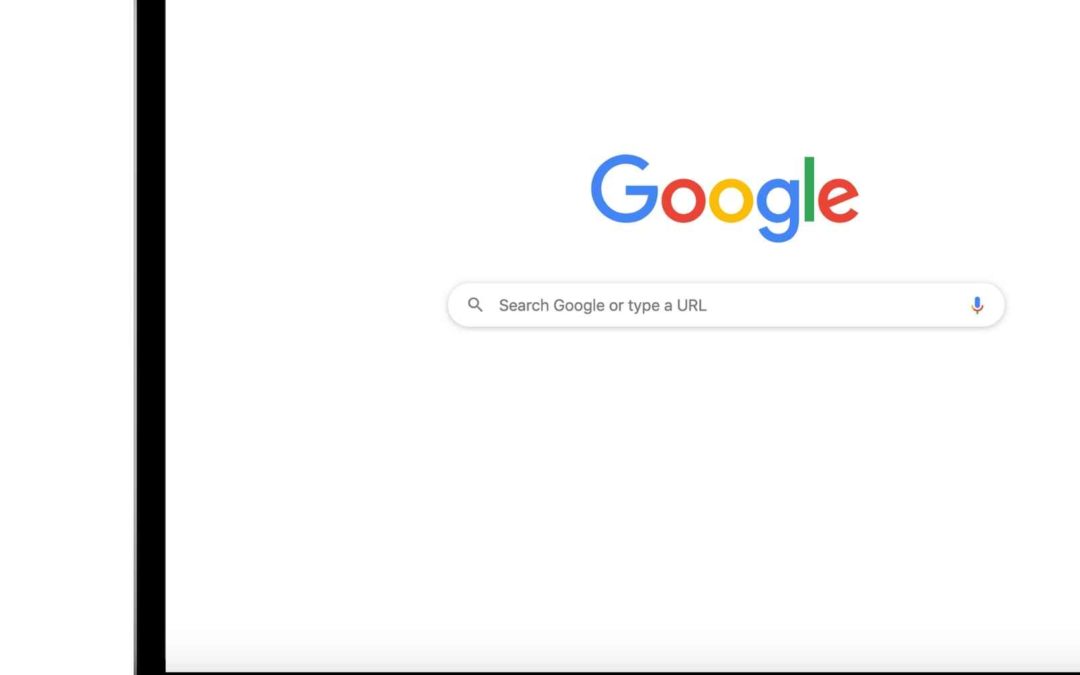I’m going to show you how to rank your therapy website by walking you through the exact process I’m using to rank this website. Let’s start with the basics: Keyword Research.
Why Keyword Research is Important to Ranking a Therapy Website
You could try to push out valuable content to your audience and hope that over time it attracts people to your website. Content marketing in this manner can work- if you have an audience.
If you want Google to find (and then show) your content, you need to target specific keywords.
Google has gotten smarter about how it looks at and views content online. It can learn what your website is about over time then show it to the people who are looking for that information.
We can give Google a head start by strategically using a targeted list of keywords.
How to Identify Keywords for Your Therapist Website
Let’s start with the basics and answer a simple question: What do people search for on Google when they are looking for a therapist?
Typical search terms would include things like “therapist near me” or “marriage counseling in Dallas”. These keywords are general and not specific to your therapy practice meaning there will be a lot of overlap between you and therapists near you.
I found that ranking for “marriage counseling in Dallas” was somewhat difficult. We refer to this as search difficulty.
You can rank for these keywords, but it’s going to take longer. So while you’re writing content and waiting for Google to rank your therapist website for “therapist near Boulder, CO”, you also want to target some low hanging fruit.
The Power of Long-Tail Keywords
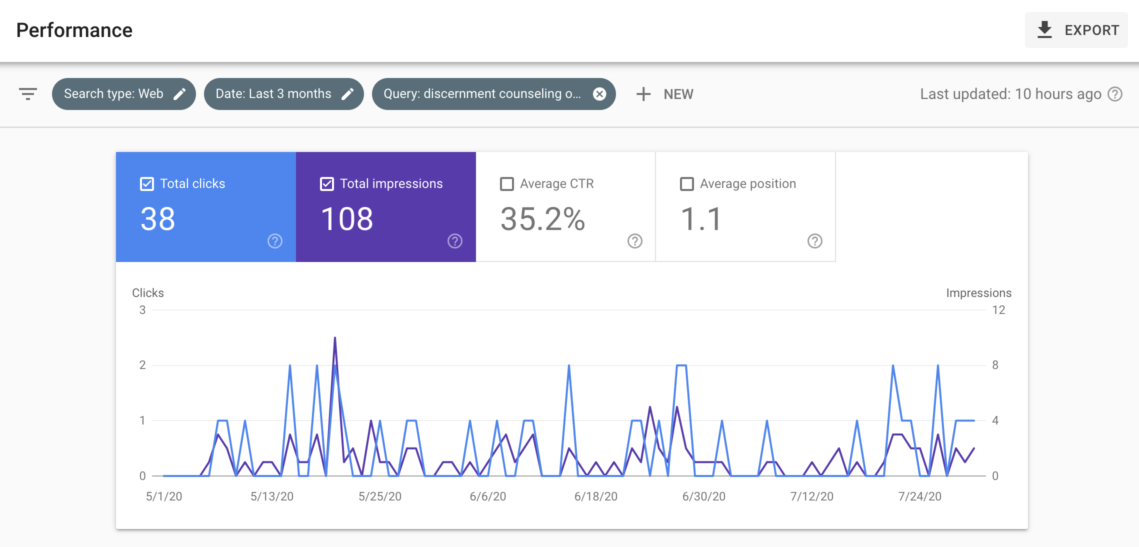
Long-tail keywords are just what they sound like: long. Instead of simply searching “therapist near me” someone might search for “therapist near me to help overcome emotional abuse”.
The beauty of these long-tail keywords is that fewer therapists are going to be trying to rank their therapist website for them, so it’ll be easier for you to get to the top of Google.
You can see in the example above how my therapy website ranks in the top spot on Google for “discernment counseling online”. This has generated 38 clicks (and 6 new clients) in the past three months.
Granted, fewer people will be searching for “discernment counseling online,” but when they do they’ll find a website (mine) that speaks directly to the pain they are experiencing.
Long-tail keywords are not only easier to rank for on Google, but they are also more likely to convert into clients because they are so specific. Win-win.
Creating Your Keyword List
The list of keywords that you target will likely be a list of more general keywords as well as long-tail keywords.
You’ll want to create a list or spreadsheet of the keywords you are hoping to rank for in Google.
Some of my favorite tools for keyword research are Google’s own Keyword Planner and Ubersuggest.
How to Use Google’s Keyword Planner
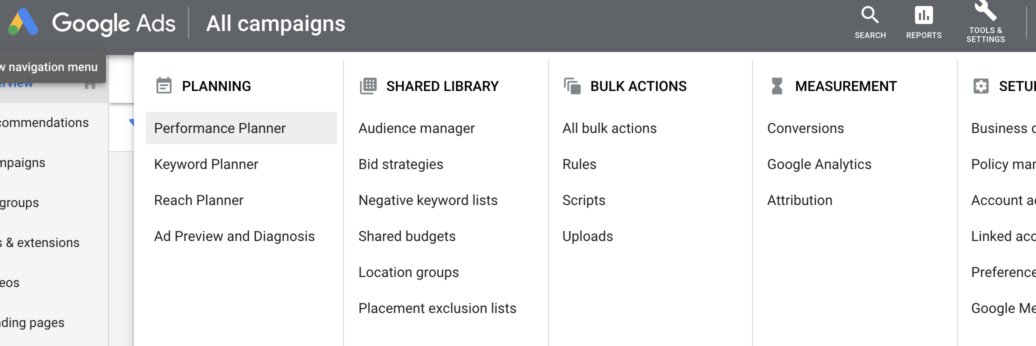
In order to access Google’s Keyword Planner, you first need to set up a Google Ads account.
Don’t worry. You don’t have to spend any money to use the tool. You’d only pay if you decided to run ads.
Once you’ve set up the account, you’re going to click on the little wrench icon in the upper right then on ‘Keyword Planner’.
From there, click on ‘Discover new keywords’.
Put in a couple keywords like “therapy near me” or “counseling for teens” and click ‘Get results’.
You’ll then see a list of the terms that you put in as well as related terms and their search volume.
TIP: Google defaults to the entire United States when displaying this data, and you can change it to your location for more specific trends.
Using Ubersuggest to Find Keywords for Therapists
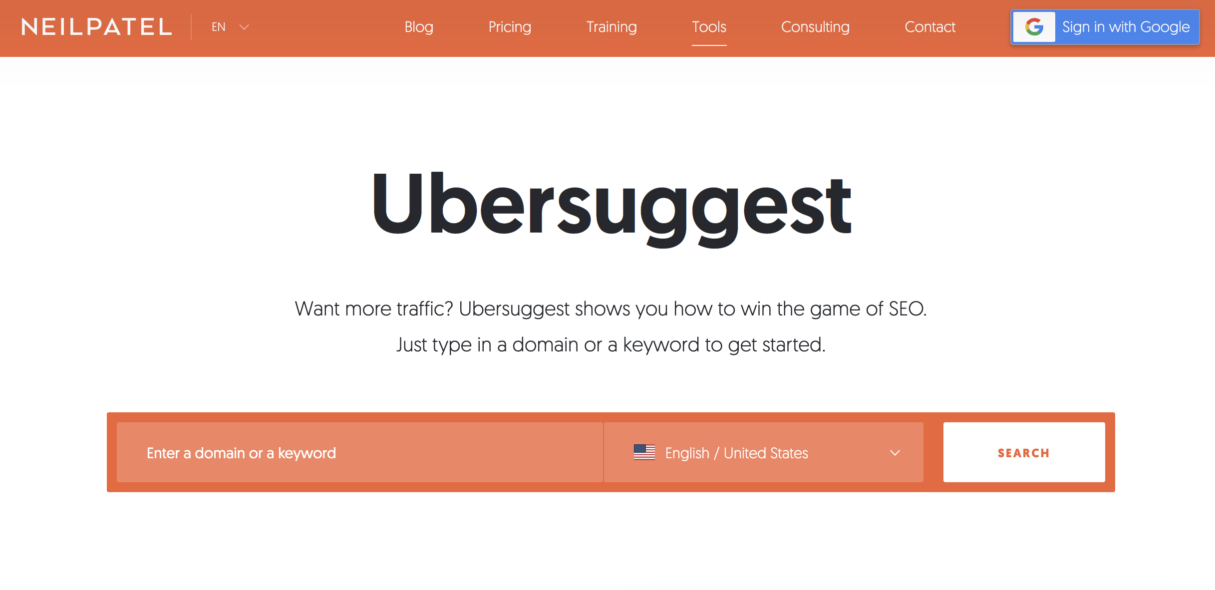
I love Ubersuggest and use it all the time for my websites as well as the therapy websites I build.
Simply go to ubersuggest.com to get started.
Once there, you can put in keywords or even a domain to begin your search.
If you type in a keyword, Ubersuggest will show you information about the search volume as well as how difficult it will be to rank for.
This is indicated by the column ‘SD’ for search difficulty. Keywords are ranked 1-100 with lower numbers being easier to rank on Google.
You can then scroll down to see related terms as well as their respective volume and search difficulty.
What to do with Your Therapy Keyword List
The first thing you want to do with your keyword list is to sprinkle them across the various pages of your therapist website.
You do this by including the keywords in headers as well as throughout the text.
You can also put them into the alt-text of your images and other areas as well. Read more about keyword placement.
Be careful here though as Google frowns upon keyword stuffing.
Previously, one could build a website and just cram as many keywords as possible and Google would rank the site. It’s why you might see footers on older websites that include a ton of text.
This is no longer the case (and we’re all better off for it).
Google has gotten smarter over the years and really strives to provide its users with the best information and experience possible.
When incorporating your keywords into your content you don’t want to overdo it, and you want to do so in a natural way.
Looking through this blog post, you can see that I’ve sprinkled in some key terms such as “therapy website” as well as terms related to keyword research.
This is how I indicate to Google that this is what this blog (and my website) are about.
From Keyword Research to Content
There are only so many places you can put your therapy-related keyword terms before you edge into the realm of stuffing.
The solution to this is to add more pages to your website, and the simplest way of doing this is through blogging.
Can you rank a therapist website on Google without blogging? Sure.
Will it be a whole lot more difficult? Absolutely.
“But Mark, what do I blog about?”
Well, with your new keyword list in hand, it’s time to turn that list into content.
The easiest way to do this is to answer the questions of your prospective clients.
Questions like “What is therapy like?” and “How do I find a great therapist?” are excellent places to start.
Kat Love’s Blog Idea Generator
Kat Love is one of my favorite people. They just don’t know it.
I’ve been following them for quite some time, and they have a great tool for generating blog ideas.
They are also one of my biggest competitors in the websites for therapists space. Sadly, (at the time of writing anyway) they aren’t taking on any clients. It’s one of the reasons I started on this journey of therapist website design.
Tangent, I know…
Anyway, to use the blog idea generator head on over to https://empathysites.com/tools/therapy-blog-post-idea-generator/
Fill out the form and click the button. Voila! 30+ blog ideas.
Granted, it’s auto generated content and not always ideal like “An Open Letter To The Friends and Family of Couples with Intimacy Issues.”
Even so, you’ll probably end up with a list of at least 10 if not 20 viable options.
Plus, you can use the generator as many times as you want! You can even put in every term you’ve found during your keyword research (though this might be a bit overkill at this point).
AnswerThePublic.com’s Free Content Idea Tool
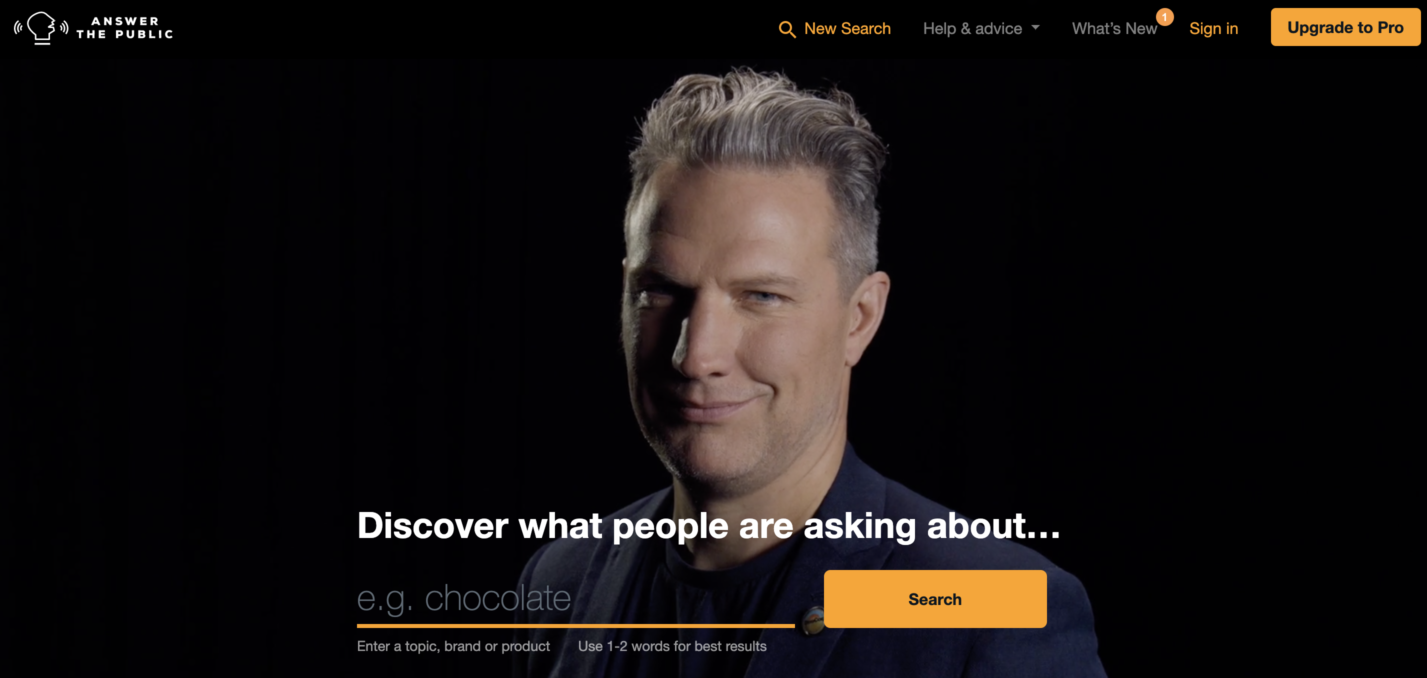
As I mentioned before, blogging and content marketing is about being helpful and answering people’s questions.
Another great tool for this is over at AnswerThePublic.com
You know how when you start typing a search into Google it’ll start trying to guess what you want to search for?
(There’s a great scene in Ralph Breaks the Internet depicting this that’s hilarious.)
Well, AnswerThePublic.com uses this auto-fill feature to generate questions and other content ideas based on what you type in.
For example, a search for ‘couples counseling’ will give you a list of questions like:
- Is couples counseling covered by insurance?
- Is couples counseling worth it?
- Is couples counseling effective?
- Is couples counseling helpful?
- Is couples counseling covered by medicaid?
- Is couples counseling a good idea?
You can then turn these questions into blog posts by answering them.
It really is that simple. Don’t overthink it.
Consistency Helps You Rank on Google
Now that you’ve done your keyword research and got your list of keywords as well as a bunch of blog ideas, your next task is to set aside time to do the thing.
Blog content isn’t going to write itself. (Believe me; I’ve yearned, wished and pleaded…)
When you start blogging, commit to a regular schedule of content. Ideal is once a week, but even once or twice per month can help you rank higher on Google.
Consistently blogging and creating a network of internal links can help you to generate new client inquiries for years to come.
Honestly, the absolute worst thing that could happen is that you write a blog and no one reads it.
It’s a possibility if no one knows that it exists, so the next step is to share your content on social media (more on this later too).
Getting people to your website, ingesting your content also helps you rank on Google.
If people are sticking around (or even better clicking around) your website, it signals to Google that people are finding value in your website.
Conclusion
Just like every house needs a foundation, your strategy to ranking on Google requires a foundation of keywords- both short and long.
Take those keywords and sprinkle them throughout your website. (This is why specific service pages are so important!)
Once you’ve laid the foundation, it’s time to build up the walls through content marketing.
Answer the questions that your prospective clients are asking. Show up and be helpful.
Don’t overthink it. Create a plan and stick to it.
Weekly blogging is best but not necessary. Even once a month is helpful (though slower).
Kick start your ranking by sharing the content on social media and encouraging people to engage and share.
If you’re ready to rank your therapist website on Google, stay tuned as I walk you through what I’m doing and sharing the insights I learn along the way.

